Piazza dei Signori
The most beautiful and celebrated piazza in Verona, a unique fusion of art, legend and power.
In a country such as Italy, in which every city has developed around a piazza which is a treasure trove of art and history, it would be difficult to draw up a ranking of the most beautiful piazzas. However, Piazza dei Signori must surely be in the running for the podium.
You will find it in the centre of town, just far enough away from the bustle of Piazza delle Erbe, via Mazzini and via Cappello, to enjoy a pleasant, relaxed atmosphere.
A veritable museum of architecture with buildings, monuments and statues representing two thousand years of the city’s history, interesting facts and legends, Piazza dei Signori is the true heart of Verona.
Your exploration of the piazza should start from here, from the palazzo in which you are staying: the Lords of Verona.
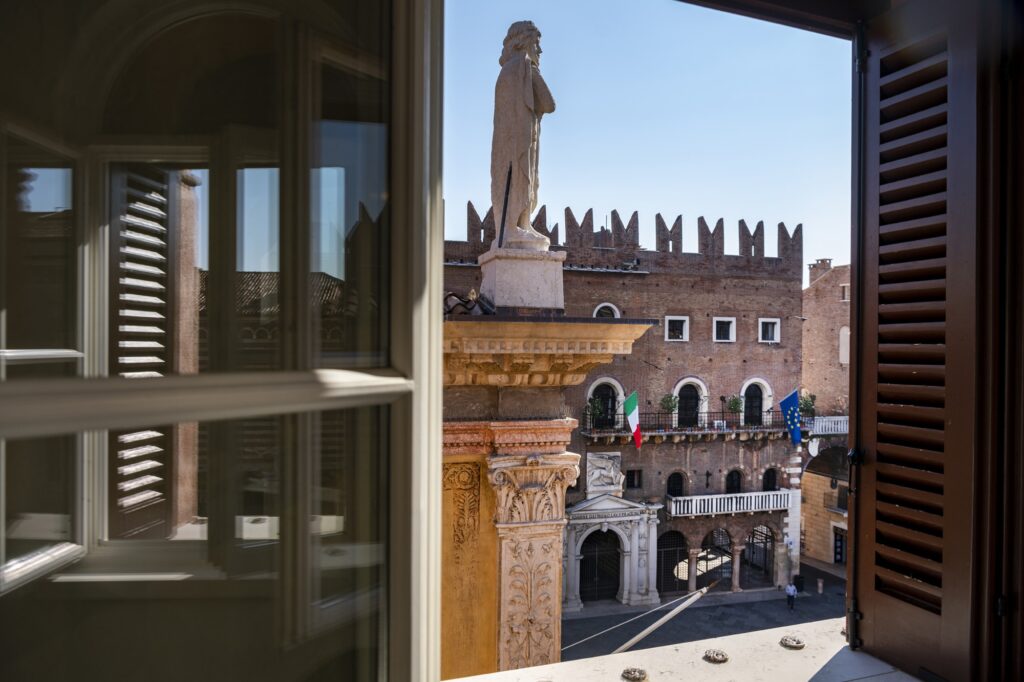
La Casa di Pietà
The home of Taddea da Carrara, wife of Mastino II della Scala, Lord of Verona in the 14th century, the building became the residence of the Camerlenghi family in the early 15th century when Verona fell under the control of Venice. It was later adapted as the headquarters of a charitable institution helping the city’s less fortunate children. In recognition of its social role, the building has since become known as Casa di Pietà, the House of Compassion.
At the end of the 15th century, the Casa di Pietà was restored with the aim of creating a harmonious complex encompassing the Loggia del Consiglio, a Renaissance masterpiece next door to Lords of Verona. The entire facade of the Casa di Pietà was then painted in the style of the times by Domenico Morone, the most important 15th century Veronese painter. Indeed, Verona was known as “Urbs picta”, a ‘painted city’, and many historic buildings still retain traces of ancient frescoes today.
Sadly, nothing remains of the frescoes now, erased by time and subsequent renovations of the facade which today is simple and elegant in form. In the centre, a bas-relief celebrates centuries of Venetian domination with an allegory: Verona, represented by a woman, rests safely under a flag with the Latin inscription “Fide et Charitate in aeternum non deficiam”, the symbol of the Venetian Serenissima Republic.
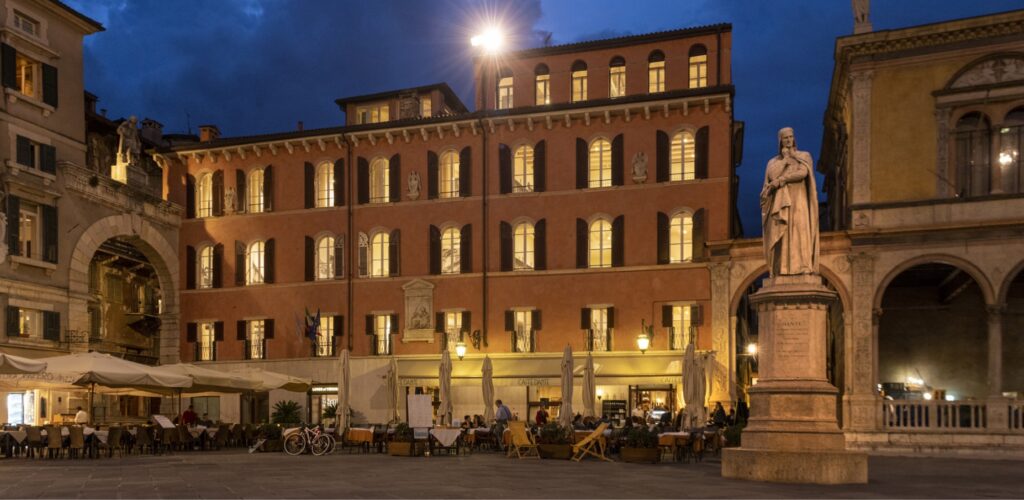
Palazzo della Ragione
Directly in front of Lords of Verona is the Palazzo della Ragione, the city’s ancient courthouse. It is one of the oldest public buildings in Italy, built in the mid-1100s to house both the court and the city council, the assembly of representatives of the corporations which elected the “Podestà”, a sort of mayor appointed to govern the city.
It is a simple and elegant Romanesque building, with the characteristic, striped brick and tuff masonry. Left of the entranceway to the piazza, you can still see one of the “lion’s mouths”, special “letterboxes” for secretly reporting complaints. This one, in particular, was used for denouncing loan sharks.
Today, the Palazzo della Ragione is the seat of the Gallery of Modern Art. From here you can enter the Lamberti tower which, reaching a height of 88 metres, is Verona’s tallest building. From the top, you can enjoy a breathtaking view of the ancient city. No worries; the Lamberti tower is equipped with a convenient lift!
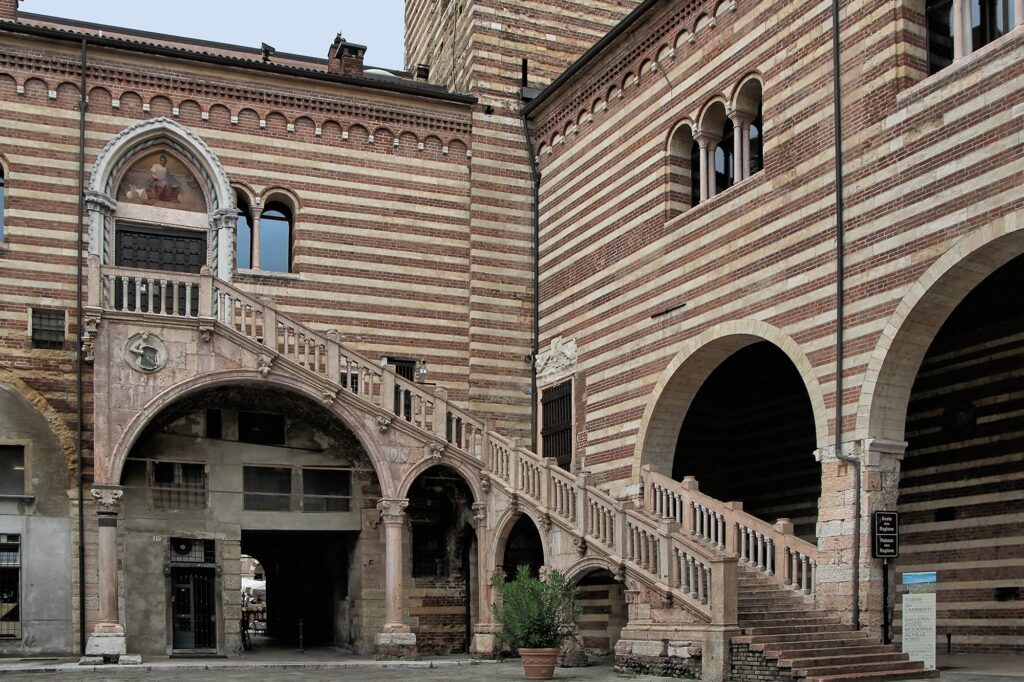
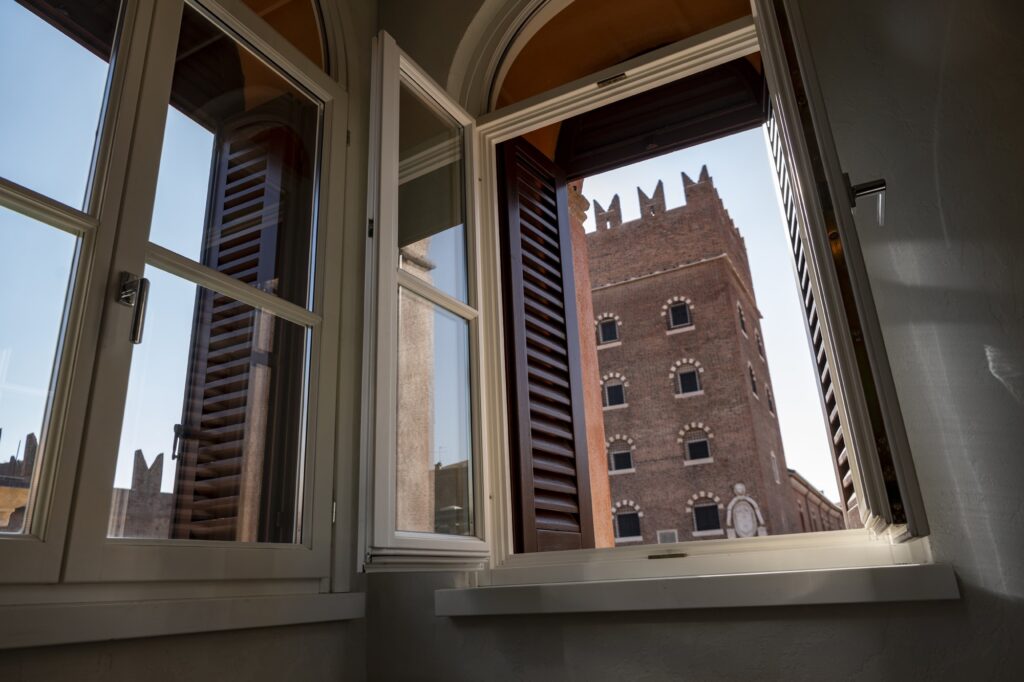
Palazzi Scaligeri – the Scaliger palaces
Leaving the Lords of Verona behind you, the Scaligeri palaces are on the left.
Towards the end of the 13th century, the city became a Signoria, the domain of a feudal lord. Power passed from the hands of a representative assembly, the Council, into those of a single family: the della Scala. They essentially became the rulers of a small kingdom which had Verona as its capital and extended over a large part of the Veneto region. The hub of this domain was the Piazza dei Signori, where the palace and the other della Scala family buildings were located.
As they were knights, always armed and dressed in armour, their residence ended up resembling a castle, with a plain, austere brick facade and Ghibelline swallowtail merlons on the upper battlements. Dante and Giotto were guests there.
Today it is the seat of the Prefecture of Verona.
Palazzo del Capitanio
The Palazzo del Capitanio lies between the Palazzi Scaligeri and the Palazzo della Ragione. It was formerly the seat of military authority. During the era of their dynasty, the role of captain was always assigned to the head of the della Scala family and his headquarters was connected to the Palazzi Scaligeri by a bridge to facilitate transit between the two buildings.
Initially, also the Palazzo del Capitanio must have resembled a castle, with towers and battlements, but the facade was completely redone in the 16th century, in an elegant Renaissance style.
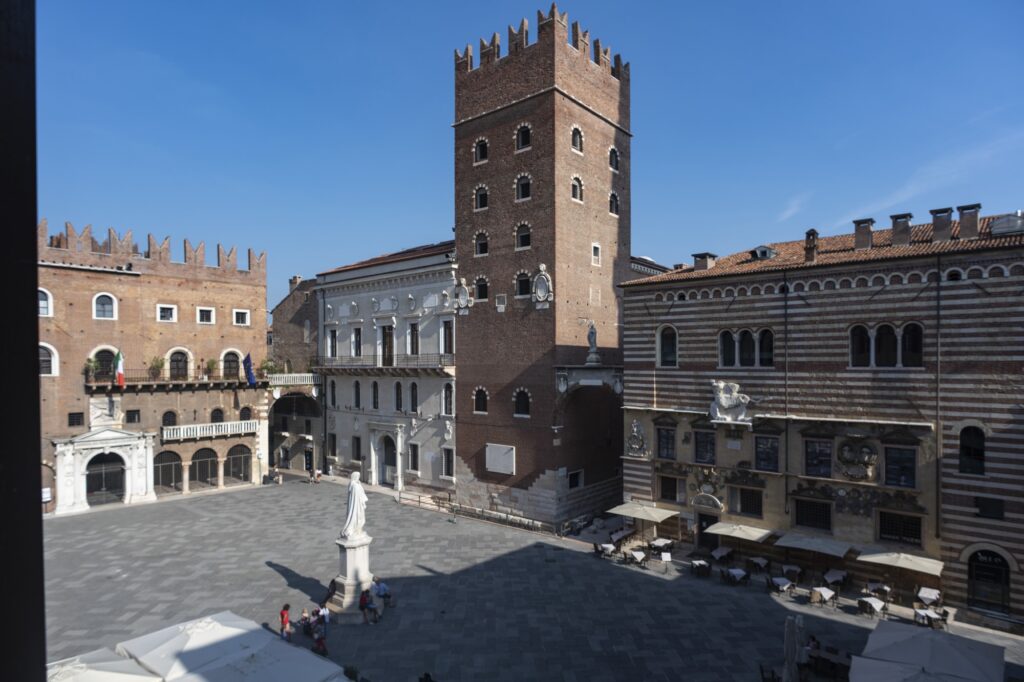
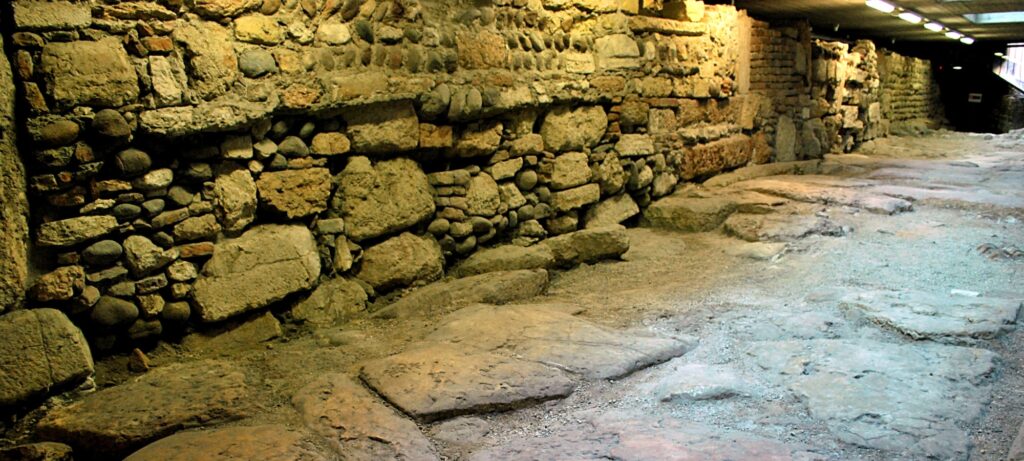
Scavi Scaligeri – the Scaliger excavations
A few decades ago, some archaeological finds were discovered during work in the Palazzo del Capitanio’s courtyard. An excavation campaign was then started which brought to light part of the Roman city, with paved streets, the underlying sewer system and the remains of patrician houses with mosaic floors. Later Lombard burials and the foundations and cellars of the Scaliger era were also excavated.
It was decided to leave everything where it was found and to create an underground museum in which the finds can be appreciated in context. The Scaligeri excavations are a unique and extraordinary underground museum.
Arche Scaligere – the Scaliger Tombs
The della Scala family tombs are located next to the Palazzi Scaligeri and the Palazzo del Capitanio – mausoleums in every sense. Known as the Arche Scaligere, these monuments are iconic examples of the Gothic style in Italy.
With their elaborate spires and pinnacles, they are reminiscent of the great French cathedrals, albeit with smaller dimensions.
The della Scala lords who ruled over Verona during the 1300s are known by the singular names of Cangrande, Mastino and Cansignorio, and were buried in these imposing monuments. The intrigue-filled events surrounding the Scaligeri, with their power struggles and assassinations, sound like the plots of noir fiction writers.
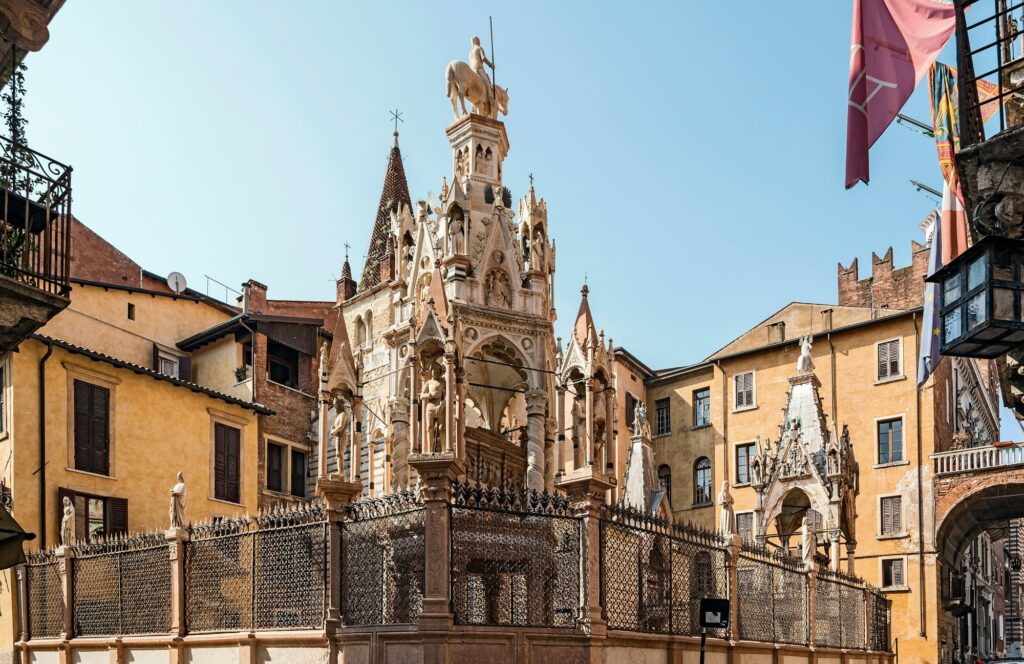
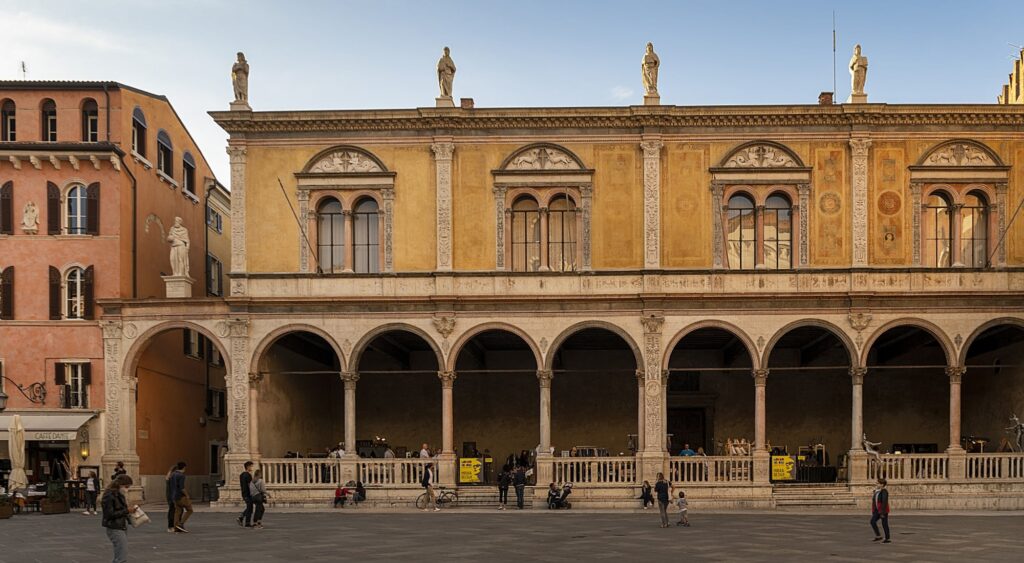
Loggia del Consiglio
Next to Lords of Verona, overlooking Piazza dei Signori, is the Loggia del Consiglio. It is one of the most refined and elegant Renaissance buildings in Italy, attributed to the Verona architect Fra Giocondo.
A typical Renaissance loggia similar to those in the Florentine style, decorated with medallions and classically-inspired friezes, it is surmounted by statues depicting Roman writers and poets from Verona. Among them stands Catullus, a native of Sirmione, which was under Verona’s rule at the time.
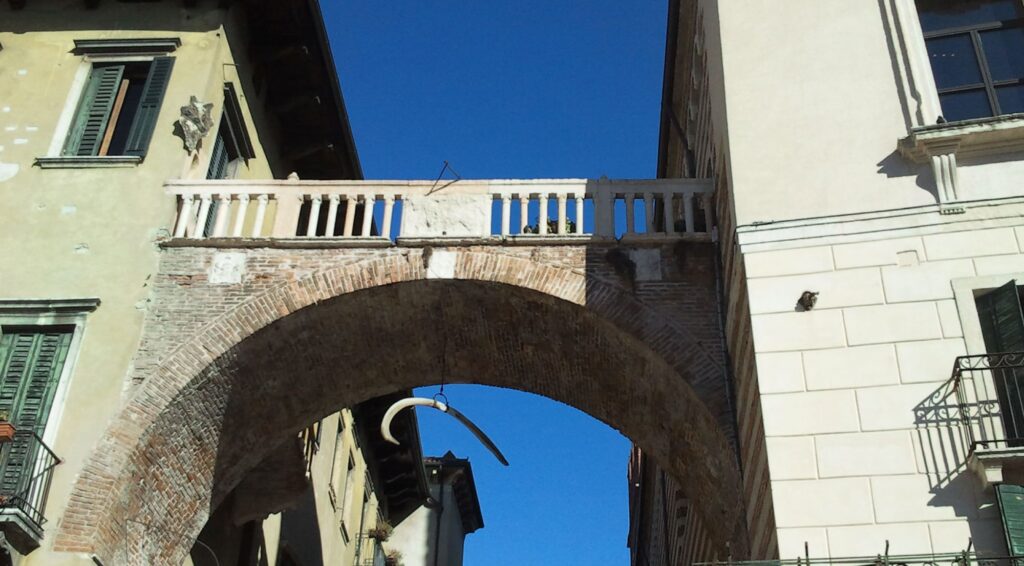
The Domus Nova and Arco della Costa
To the right of the Lords of Verona, lies the palazzo which used to be the residence of judges and magistrates, both in medieval times and during Venetian rule. It is a late Renaissance building that was remodelled several times during the 17th and 18th centuries. The façade features statues of Venetian rectors, officials appointed by Venice to govern cities under the rule of the ‘Serenissima Republica’.
There were no lifts then to facilitate the judges passing from home to court, so to avoid them being approached by people seeking to bribe them or take revenge, an arch was built connecting the Domus Nova directly with the Palazzo della Ragione (the courthouse). This is the Arco Della Costa – the “rib arch”, so called because of the large whale rib mounted on an iron rod hanging from it. The reason it was hung there is shrouded in mystery. The most likely explanation is that it was a sort of apothecary sign, an indication of the presence of an ancient pharmacy located just beneath it. At one time, substances derived from whales were used in medicine, such as whale oil, spermaceti and ambergris.
Statues
Piazza dei Signori is embellished with statues of artists, writers and scientists who have brought prestige to Verona over the centuries.
Girolamo Fracastoro
The arch connecting the Loggia del Consiglio to Lords of Verona is surmounted by a sculpture of a bearded man holding a globe. He is Girolamo Fracastoro, a 16th-century Veronese doctor. A relatively unknown figure, he was the official physician to the Council of Trent. He also wrote treatises in which he proposed that certain diseases were caused by microscopic organisms which reproduced within the human body: he thus laid the first foundations for modern pathology. Known for his great moral rigour, when his statue was placed on the arch, the rumour spread that if an honest man were to pass under it, Girolamo Fracastoro would drop the globe he held in his hand in amazement; he is, as yet, still holding it firmly.
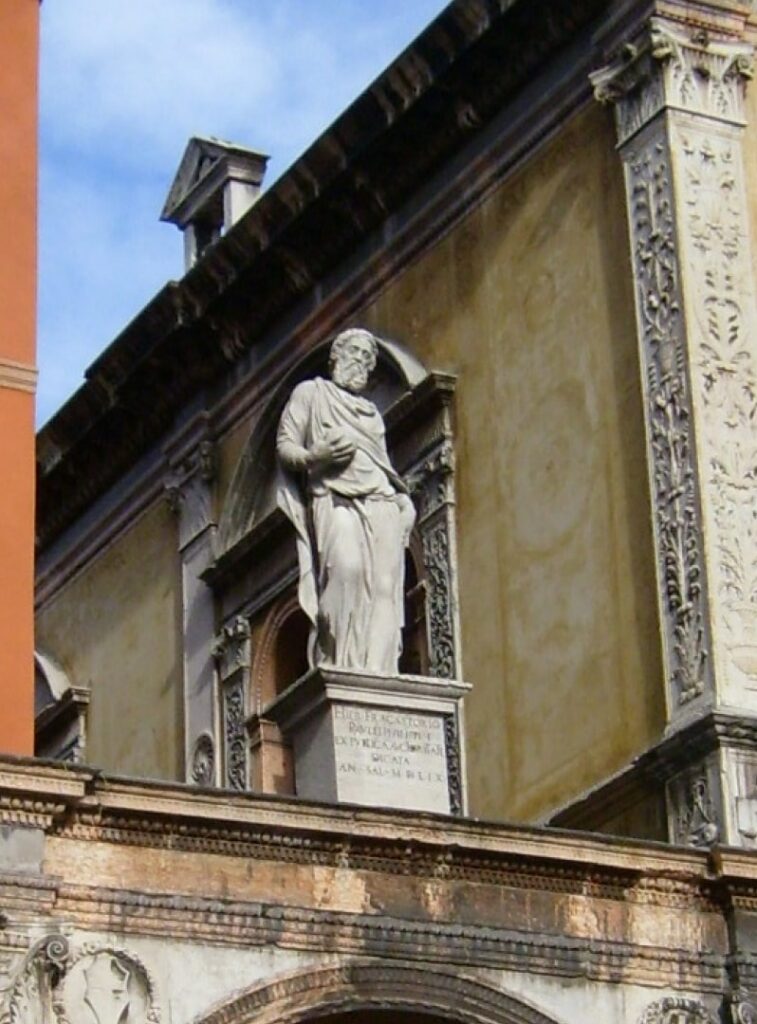
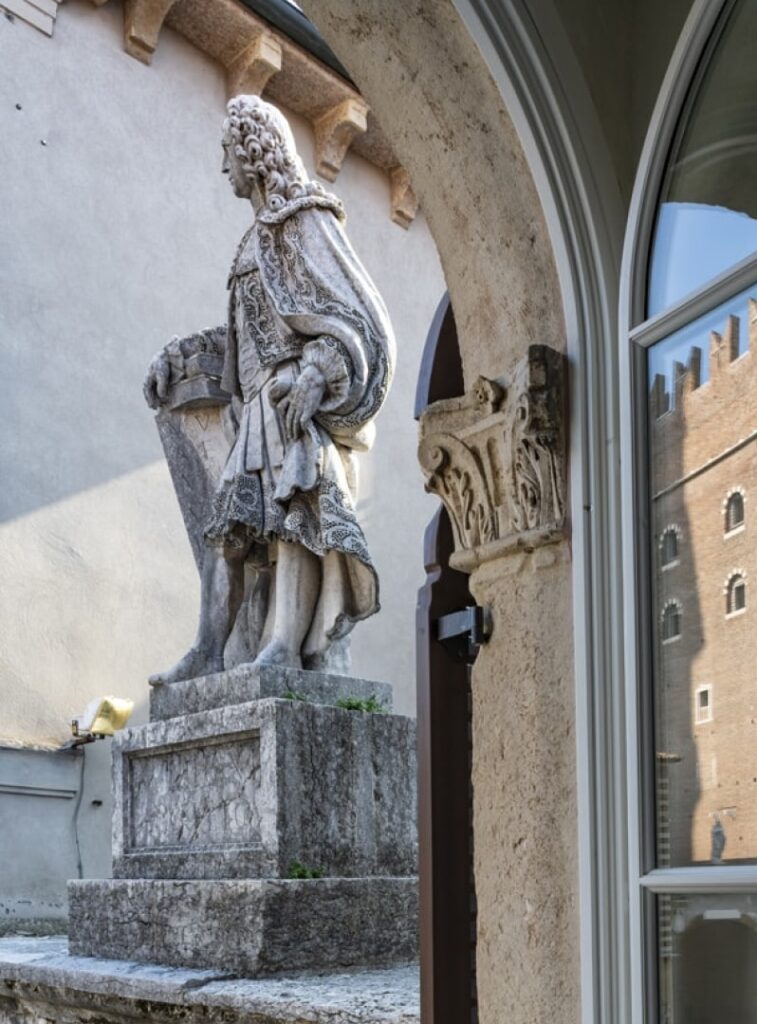
Scipione Maffei
As you step outside Lords of Verona, look up to the right and you will see the statue of a man with a thick wig and 18th-century clothes. This is Scipione Maffei, an erudite intellectual from Verona and man of the enlightenment. His collection of Roman epigraphs evolved into one of the first public museum collections in Europe. His studies and research led to the discovery of the oldest and most precious manuscripts in the Capitular Library, the world’s oldest library. His cultural activism led to the founding of the Philharmonic Theatre of Verona, which is still active today.
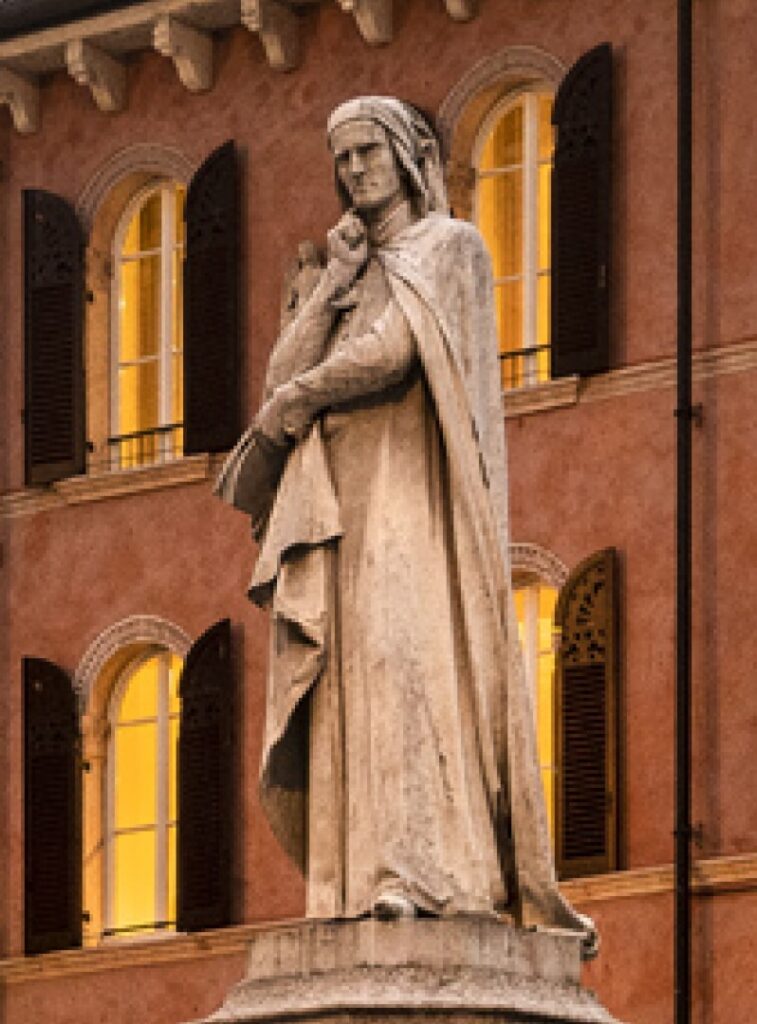
Dante
In the centre of Piazza dei Signori, right in front of Lords of Verona, is the statue of Dante Alighieri. As everyone knows Dante was originally from Florence, but he spent many years in exile in Verona as a guest of the Scaligeri. The last book of the Divine Comedy, Paradise, is dedicated to Cangrande della Scala, lord of Verona. The statue of Dante was erected in 1866 when Verona was still under Habsburg domination, and it caused some tension. It was, after all, the statue of the father of the language of a nation, Italy, and Verona and Veneto were not part of that nation. Many of Verona’s citizens still call Piazza dei Signori “Piazza Dante”.
